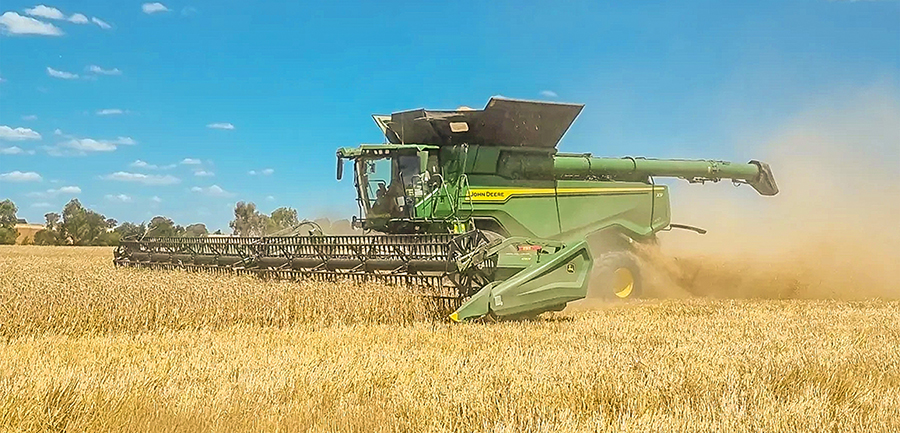Broden and Chris Holland decided to buy two new harvesters to improve capacity and safety when reaping their 4400-hectare grain crop.
The Hollands, who farm between Young and Grenfell in New South Wales with three permanent employees, had routinely harvested 24 hours a day in shifts until Broden had an accident.
“In 2017, I had a microsleep at the wheel of the harvester, hit a tree and wrote off one of our Case harvester fronts,” Broden says. “We decided working big hours was not worth the risk of future accidents.”
They subsequently bought two John Deere S780 machines, but after test-driving a John Deere X9 in 2022, the pair decided to upgrade to two John Deere X9 machines for the 2023 harvest with the aim of running them 15 hours a day.
Broden says the drawcard for the twin rotor John Deere X9 machines was the 30 per cent increase in capacity over their two John Deere S780 machines.

The John Deere X9 harvester, which Broden and Chris Holland inspected in 2022.
He says the X9 machines should also reduce grain losses when needing to push hard when rainfall is forecast.
Broden estimates they will go from 320 rotor hours a year with two John Deere S780 machines to 260 rotor hours with two John Deere X9 machines.
"We should be able to harvest our wheat, canola and faba bean crops up to a week faster, which might mean I can have a holiday after harvest," Broden says, laughing.
"With some grain held in silos on farm, other grain sold to a poultry farm, and the remainder delivered to grain handling authorities, having the two larger-capacity harvesters will keep our two mother bins and three trucks rolling.
“We put the safety of our employees first, and the larger-capacity harvesters coupled with 15-hour working days should be easier on the team at a high-pressure time."
More information: Broden Holland, [email protected]

























































